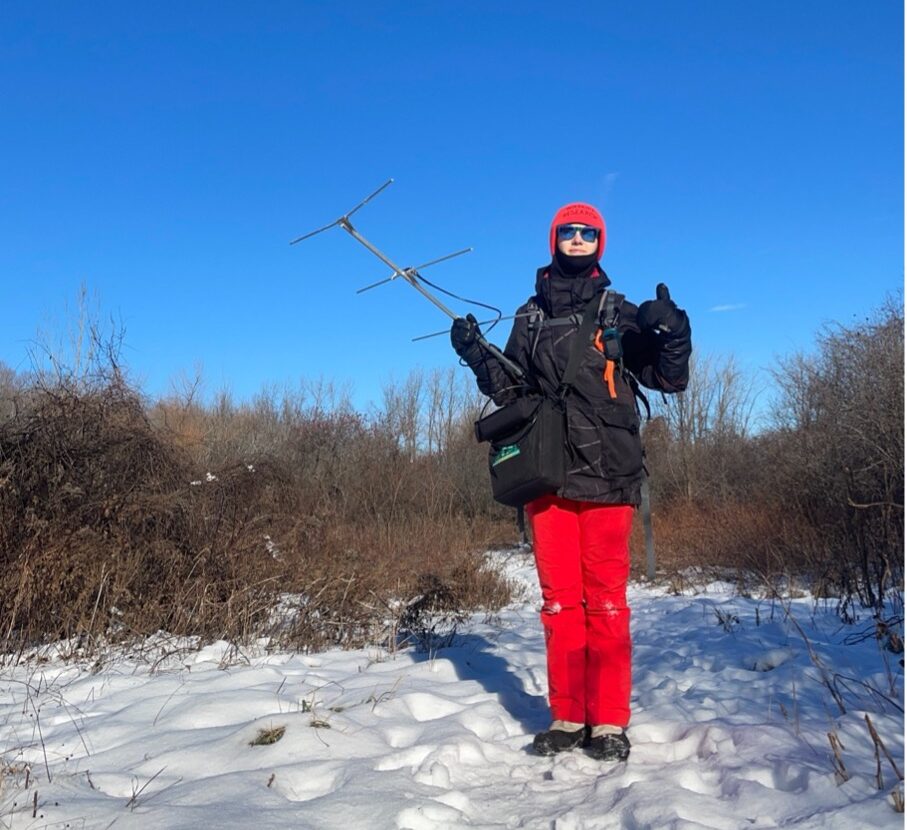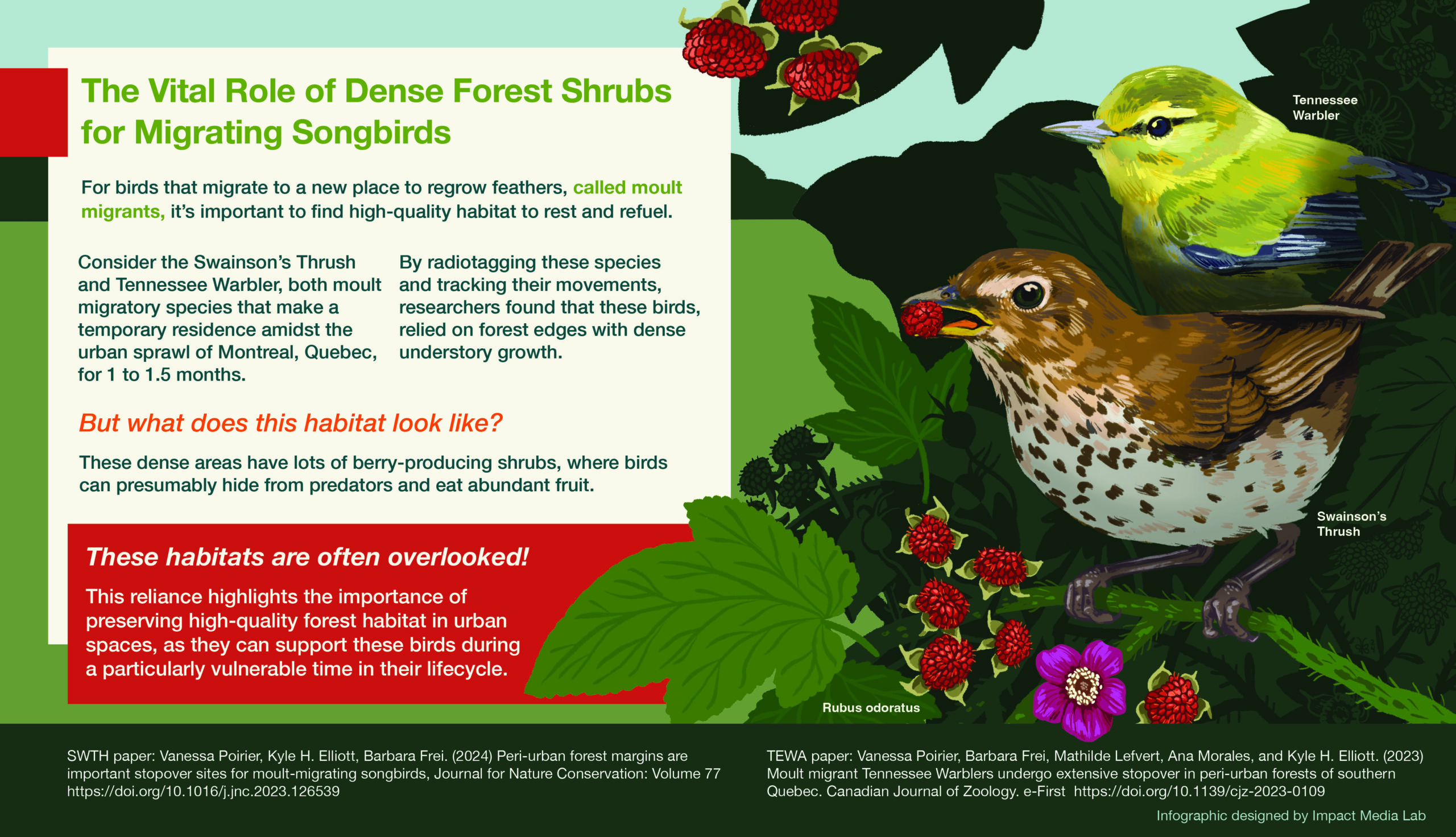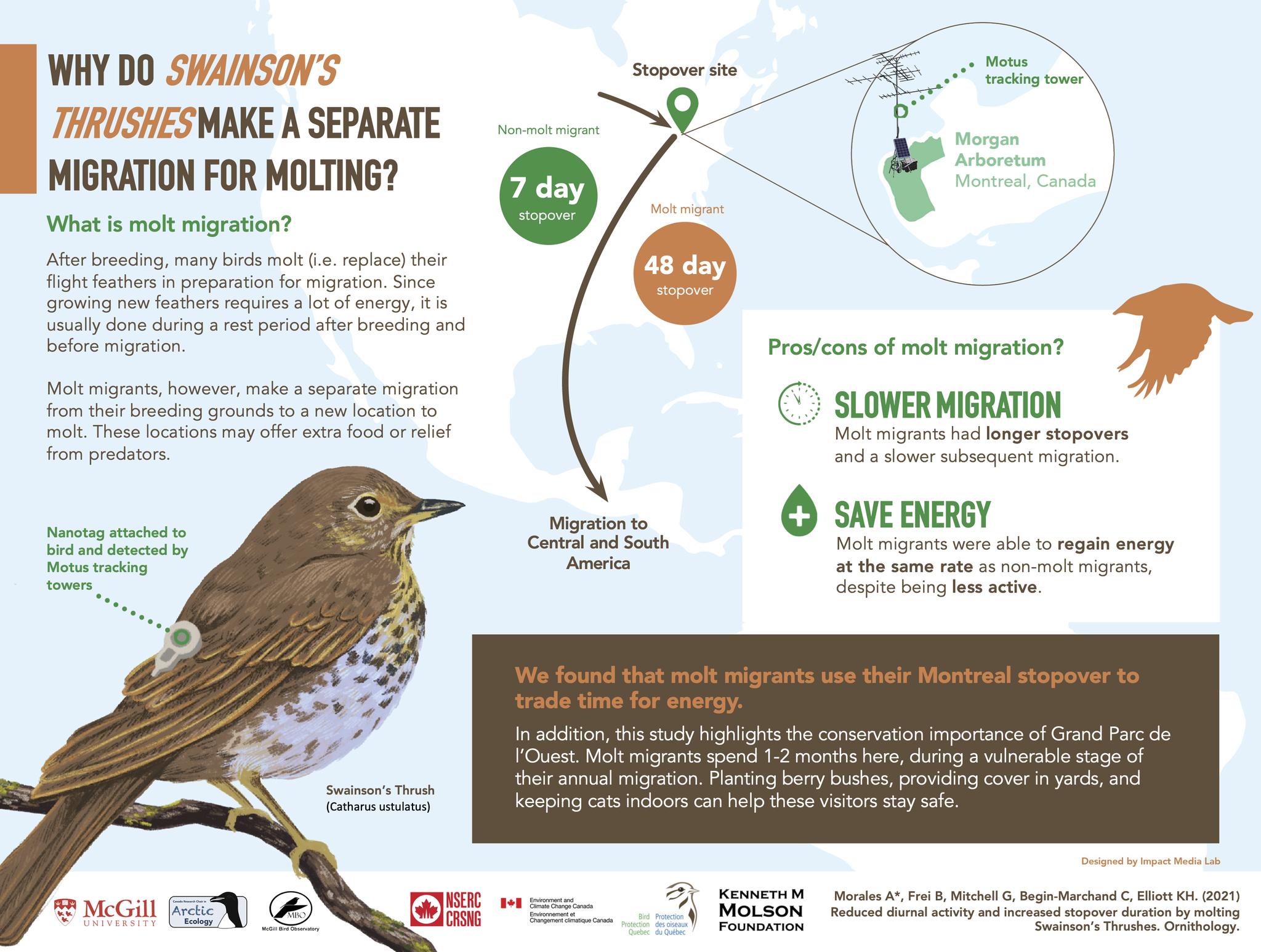Student Program
Since receiving initial seed funding in 2016, from Bird Protection Quebec and the Kenneth M. Molson Foundation, the MBO research program has continued to grow, expanding its contributions to avian science. Led by Dr. Barbara Frei in collaboration with Dr. Kyle Elliott from McGill University, MBO has conducted groundbreaking research on migration timing, the discovery of new hybrid warblers, spatial patterns in migration connectivity, blood metabolites as indicators of bird health, feathers for assays of stable isotopes and molt migration in neotropical species.
Since then, the MBO research team has supported ten undergraduate and graduate student theses, further contributing to the advancement of avian science.

Research Area
McGill Bird Observatory collaborates with academic and government researchers, as well as university students, across various fields.
Our involvement ranges from sharing banding and observation data to assisting in the sampling process or actively contributing to the development, analysis, and publication of primary research.
Below is a list of peer-reviewed publications authored by our team and students, as well as collaborative studies that have utilized our banding data.
Number of projects per research area
Publications
Posters


MOTUS
The Motus Wildlife Tracking System is an innovative, collaborative research network that uses automated radio telemetry to study the movements of small flying animals, including birds, bats, and insects, over vast distances. Tiny radio transmitters, called nanotags, are attached to the animals, emitting signals detected by a global network of receiving stations.
These strategically placed stations track migration routes, stopover sites, and behaviors, providing researchers with valuable data. Motus is a powerful tool for understanding migration patterns, guiding conservation efforts, and promoting international collaboration in wildlife research.
Key Finding
-
Boreal breeding molt migrants, such as Swainson’s Thrush and Tennessee Warblers are spending extended stopovers at MBO, around 46-47 days representing 13% of their annual cycle (Morales et al. 2022; Poirier et al. 2024b)
-
Forest margins and other shrubby habitats can be critical for migratory birds during stopover, including molt migrants (Poirier et al. 2024a)
-
With warmer temperatures in the spring and fall, we see a significant shift in migration over time, with birds arriving earlier in the spring and later in the fall (Jarjour et al. 2017)
-
Migratory birds have varying dietary needs during stopovers, with active migrants favoring plant-based food items and molting birds relying on protein rich insect food sources (Blanc-Benigeri et al. 2024)
Highlights of 2024
We have currently two projects using the MOTUS technology.
Two warbler species were tag to identify their movements during the fall migration period and look broadly at their migration patterns along the highly urbanized Atlantic Flyway
- Chestnut-sided Warbler : 15 birds tag
- Yellow Warbler : 16 birds tag
Northern cardinals were tagged and relocated to areas with varying levels of urbanization, where researchers tracked their movements weekly through the winter in order to understand how they are using urban green spaces during this cold season.
- Northern Cardinal : 38 birds tag
Total in 2024 : 69 birds tag
How Can You Help
Our research is made possible through the generous support of donors, volunteers, and partners. Your donations help keep our observatory running, allowing us to conduct vital studies on bird migration, stopover behaviors, and habitat conservation. Contributions directly fund research equipment, banding efforts, and outreach initiatives.
You can also support our work by volunteering, participating in community science projects, or simply spreading awareness about the importance of bird conservation. Every effort makes a difference in protecting migratory species and their habitats